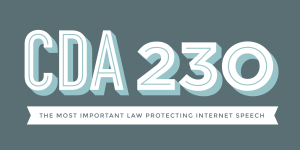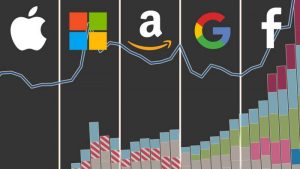Found on the internet today:
Security Vulnerability of Switzerland’s E-Voting System
The Problem With Counterfeit People
Found on the internet today:
Companies using AI to generate fake people are committing an immoral act of vandalism, and should be held liable.
Whole Earth Index
Tech-podcast over de inrichting van grote cloudplatforms, de menselijke factor in veilig technologiegebruik en storingen in belangrijke systemen.
In deze negende tech-podcast bespreekt ik met Michael van Wetering, expert innovatie bij Kennisnet, belangrijke tech-ontwikkelingen uit het nieuws. In deze aflevering gaan wij in gesprek over over de inrichting van grote cloudplatforms, de menselijke factor in veilig technologiegebruik en storingen in belangrijke systemen.

Grote cloudplatforms verantwoord benutten
Hoe vergelijkbaar is het aanbod van grote cloudplatforms? We onderscheiden aanbieders van cloudbouwstenen en ‘kant-en-klare’ producten zoals Office 365 of Google’s Gsuite. Op de ‘bouwstenen markt’ is concurrentie zichtbaar onder andere gestimuleerd door GAIA-X, een interessant Europees initiatief, wat houdt dat in?
Intussen worden cloud office platforms in Nederland doorgelicht met DPIA’s. Wat behelst zo’n assessment en wat levert dat concreet op?
Genoemde bronnen:
- Meer over DPIA’s op aanpak informatiebeveiliging en privacy in het onderwijs
- EU initiatief GAIA-X
- AVG conform Microsoft (cloud)producten gebruiken
Veiligheid afhankelijker van gedrag dan technologie
Onderzoek door de Algemene Rekenkamer wijst uit dat ook bewindslieden voor uitwisseling van vertrouwelijke informatie onveilige apps gebruiken zoals Whatsapp of privé e-mail accounts. Waarom gebeurt dat? En hoe overtuig je gebruikers, ook leraren en onderwijsbestuurders, om hun gedrag aan te passen en veilig ingerichte apps te gebruiken?
Genoemde bronnen:
- Onderzoek algemene rekenkamer naar gebruik onveilige apps door bewindspersonen
- Aanvullend genoemd EU voorstel backdoors vanwege rechtshandhaving
Storingen in belangrijke systemen van universiteiten en GGD’s
Onze afhankelijkheid van digitale systemen neemt steeds verder toe. Waarom zijn dergelijke systemen niet betrouwbaarder ingericht? Hoe vindt je de juiste balans tussen acceptabele risico’s en een realistisch niveau van investeringen?
Genoemde bronnen:
- Storingen in de GGD systemen
- Storingen bij online tentamens universiteiten Amsterdam en Groningen
- Maatregelen bij Boeing om herhaling software problemen te voorkomen
Bonusonderwerp: Google onderzoek legt structureel probleem (underspecification) in AI bloot, twee interessante bronnen
Tech-podcast over democratisch toezicht op technologie, de verantwoordelijkheid van platforms en (zelf)uitlegbare kunstmatige intelligentie
In deze achtste tech-podcast bespreekt ik met Michael van Wetering, expert innovatie bij Kennisnet, belangrijke tech-ontwikkelingen uit het nieuws. In deze aflevering gaan wij in gesprek over de noodzaak van democratisch toezicht op technologiebedrijven, de verantwoordelijkheid van platformpartijen en (zelf)uitlegbare kunstmatige intelligentie.

Democratisch toezicht op technologiebedrijven
De grote internetplatforms beloofden een democratiserende kracht te zijn voor onze maatschappij. Intussen is duidelijk dat zijzelf nu vaak monopolisten zijn met grensoverstijgende, ongecontroleerde macht. Hoe krijgen we deze technologiebedrijven onder onafhankelijk toezicht? Hoe organiseren we ook hiervoor democratische verantwoording nu onder andere onze zorg en het onderwijs steeds afhankelijker worden van technologie? We bespreken enkele hoopgevende ontwikkelingen in zowel de VS als de EU.
Genoemde bronnen:
- Uit NRC: Technologie democratie (marietje schaake)
- Ontwikkelingen rond privacy shield, Max Schrems: techbedrijven maken geen aanstalten data in EU op te slaan
- Uit MIT technology review: verdergaande EU wetgeving in aantocht, gebruiker eigenaar van zijn data
- Concreet voorstel van NL/FR t.a.v. toezicht op platforms
- Cory Doctorow: How to Destroy Surveillance Capitalism
De verantwoordelijkheid van platforms
Op de platforms van bijvoorbeeld Facebook, Twitter en Google’s Youtube kan eenieder zijn eigen content publiceren. Volgens artikel 230 van de Amerikaanse communications decency act zijn die platforms niet verantwoordelijk voor de geplaatste content. De controverse daarover neemt snel toe. Wat is de achtergrond van artikel 230? Waarom zien we platformpartijen nu toch maatregelen nemen? We bespreken de ontwikkelingen en de impact ervan ook op het Nederlands onderwijs.
Genoemde bronnen:
- Meer uitleg over artikel 230 uit de Communications Decency Act
- Toelichting Cory Doctorow op de aanleiding en controverse rond artikel 230
(Zelf)uitlegbare kunstmatige intelligentie
Kunstmatige intelligentie (AI) wordt steeds vaker toegepast, ook in het onderwijs. Tegelijkertijd intensiveert de discussie over de noodzakelijke kaders om deze technologie veilig te kunnen gebruiken. Is het nodig om het algoritme van de AI te begrijpen? Of willen we vooral de afweging kunnen nagaan om de eindverantwoordelijkheid te kunnen nemen? En wat is zelfmonitorende AI?
Genoemde bronnen:
- AI moet geen pijn doen, o.a. over zelfmonitorende AI
- Verdiepend stuk op Kennisnet: Artificial intelligence verantwoord inzetten: laat de algoritmen zichzelf uitleggen
Tech-podcast over techreuzen, hun invloed op het onderwijs en internationale privacyconflicten
In de Tech-podcast van Kennisnet bespreek ik met Michael van Wetering, expert innovatie bij Kennisnet, de meest opvallende tech-nieuwsberichten. In deze aflevering zijn we in gesprek over de invloed van grote technologiebedrijven op ons Nederlandse onderwijs, internationale discussies over privacy en de antitrust-hoorzittingen rond de grote Amerikaanse technologiebedrijven.

Techreuzen en hun invloed op ons onderwijs
In hoeverre beïnvloeden de grote technologiebedrijven met hun producten het onderwijs in Nederlandse scholen? Waar houdt marketing op en bepalen producten hoe onderwijs wordt gegeven? Welke invloed heeft de samenwerking van besturen binnen SIVON op de dynamiek tussen markt en scholen?
Het onderwijs zet stappen vooruit in de omgang met technologie en moeten daarin niet onderschat worden. Daarbij is aandacht nodig voor de positie van zowel leerlingen als leraren.
Drieluik NRC artikelen: één, twee en drie.
Internationale privacyconflicten
Welke gevolgen heeft het wegvallen van de Privacy Shield overeenkomst tussen de Europese Unie en de Verenigde Staten? Geeft dit problemen bij het gebruik van programma’s zoals Gsuite of Office365? En waar gaat het nu eigenlijk om met al dat gedoe rond 5G-apparatuur van Huawei en sociale media app TikTok? Spoiler alert: de soep wordt wederom niet zo heet gegeten als die wordt opgediend. Wij komen tot de conclusie dat er vooral sprake is van internationale handelspolitiek, maar waakzaamheid rond de privacy van leerlingen en leraren blijft natuurlijk geboden.
Antitrust-hoorzittingen in de Verenigde Staten
Is er sprake van een te grote machtsconcentratie bij de grote Amerikaans technologiebedrijven? Belemmeren zij gezonde concurrentie en innovatie met hun online marktplaatsen? Apple, Facebook en Google werden aan de tand gevoeld. Microsoft vreemd genoeg niet. Hier is het laatste woord nog niet over gezegd en geschreven is onze indruk.